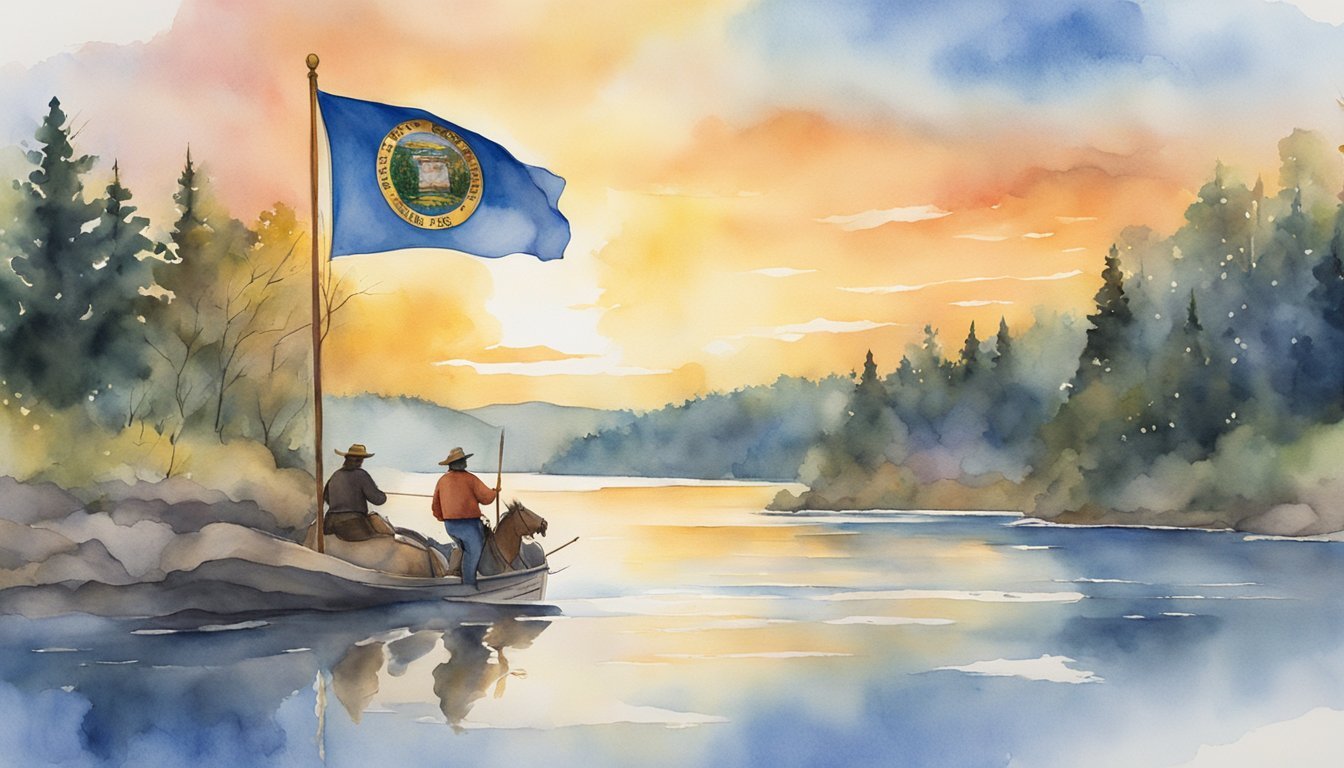History and Significance

The Minnesota state flag boasts a rich heritage and communicates important symbols of the state’s identity. The design, which has evolved over time, recounts the history and embodies the aspirations of Minnesota.
Origins and Adoption
Minnesota adopted its first state flag in 1893. Initially created for the state’s contribution to the 1893 Chicago World’s Fair, the flag featured a white field on one side and a blue field on the other. However, it was the 1957 legislation that drastically transformed the flag’s look, and a slight update occurred in 1983, which included adding the word “Minnesota” and altering the state flower representation.
Symbolisms and Emblems
The state seal at the flag’s center holds profound meaning. A pioneer tills the soil, symbolizing labor and the cultivation of Minnesota’s resources, while a Native American rides to the south, indicating the state’s origins and heritage. Above them, the North Star epitomizes the state motto “L’étoile du Nord” or “Star of the North,” also signifying guidance and direction. Nineteen stars are a nod to Minnesota being the 19th state after the original 13. Encircling the seal, a wreath of lady’s slipper flowers, Minnesota’s state flower, highlights the state’s natural beauty. The flag’s deep blue background reflects loyalty and perseverance, qualities cherished by its people. Interestingly, the flag has undergone redesign discussions over the years, much like how Francis Bellamy, who wrote the pledge, influenced national symbols with his composition of the Pledge of Allegiance.
Controversies and Calls for Redesign
The flag has faced criticism for its lack of distinction, complex seal, and outdated symbolism. The North American Vexillological Association ranked Minnesota’s flag 67th out of 72 U.S. and Canadian flags. Calls for a redesign have emerged out of a need for a flag that is more recognizable and representative. Moves by commissions or legislature, however, have yet to result in substantive changes as of today.
Legislative and Public Response

The process leading to the redesigning of Minnesota’s state flag has triggered a notable legislative and public response, with actions driven by an established commission and feedback echoed across social media platforms.
Recent Legislative Efforts
The Minnesota Legislature played a pivotal role by instituting the State Emblems Redesign Commission. The commission, consisting of various members including two from the House and Senate as nonvoting entities, was tasked with developing new designs for the state flag and seal. Following the deliberations, the Minnesota Senate and the GOP lawmaker were expected to review and approve the design ahead of the designated effective date. The influence of figures such as State Sen. Mary Kunesh was instrumental in navigating the legislative process towards the adoption of a new emblem that resonated more closely with Minnesota’s heritage, including recognition of Native American contributions, particularly from the White Earth Band of Ojibwe.
Public Opinion and Participation
Public involvement in the flag-redesign process has been substantial, with social media platforms becoming primary channels for Minnesotans to express their views. A transparent debate encouraged the inclusion of public thoughts, with citizens contributing design ideas and voting on preferences. The Minnesota state emblems redesign commission incorporated methods to gauge feedback and ensure the design reflected a collective identity. Though the new flag design did not require a direct referendum, the broad engagement with the community aimed to embody a sense of statewide consensus.

